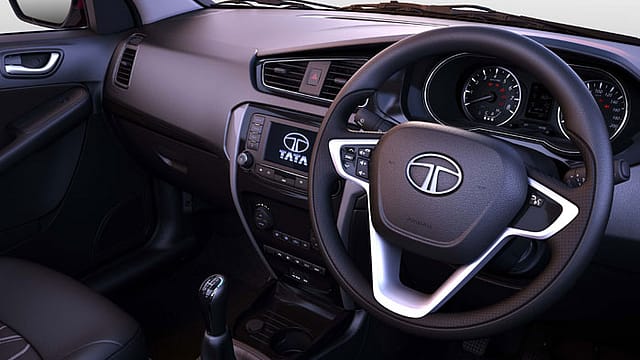Strong domestic demand, JLR drive Tata Motors Q4 profit to ₹5,408 cr
ADVERTISEMENT

Tata Motors Ltd reported a profit for the second consecutive quarter on Friday, aided by strong demand in India and better volumes for Jaguar Land Rover (JLR).
Net profit of the Tata group-owned automaker stood at ₹5,408 crore for the January-March quarter compared with a loss of ₹1,032 crore in the corresponding period last year. Tata Motors had clocked a net profit of ₹2,957.71 crore for the quarter ended December 2022.
Revenue from operations jumped 35% year-on-year to ₹1.05 lakh crore during the fourth quarter as against ₹78,439 crore in the year-ago period.
The carmaker's board announced a dividend of ₹2 per equity share and ₹ 2.1 per share for differential voting rights (DVR) shareholders.
Pricing actions and a richer mix led to improved average selling prices (ASPs) and higher revenue growth, the automaker says in its earnings release.
Easing inflation, better mix, pricing actions, and favourable operating leverage resulted in strong improvements in margins and profits, it adds.
"We remain optimistic on the demand situation despite near term uncertainties and expect a moderate inflationary environment in the near term. In this context, we aim to further improve and deliver a strong performance in FY24," the company says, adding that the momentum is expected to build through the year factoring in seasonality, stabilisation of JLR supply chain and post real driving emission impact in India.
December 2025
The annual Fortune 500 India list, the definitive compendium of corporate performance, is out. This year, the cumulative revenue of the Fortune 500 India companies has breached $2 trillion for the first time. Plus, find out which are the Best B-schools in India.
Revenue from Jaguar Land Rover (JLR) came in at 7.1 billion pounds, up 49% year over year, as chip supply improved further. JLR's Q4 EBIT margin stood at 6.5%.
"JLR delivered a strong set of results for the fourth quarter. We increased production and delivered revenue, profit, free cash flow and wholesales growth as chip supply continued to improve. For the fiscal year ahead, while we are mindful of the headwinds that remain, our target is to increase EBIT margins to over 6% and deliver significantly positive free cash flow to reduce our net debt further," says Adrian Mardell, Jaguar Land Rover's interim chief executive officer.
In the commercial vehicles segment, Tata Motors' fourth-quarter revenue rose 14.6% to ₹21,200 crore. "The commercial vehicles industry continued to recover in FY23 led by strong demand in MHCV's and recovery of CV passenger segment. MHCV growth was driven by the robust demand for heavy trucks required to service the strong infrastructure push by the government plus increased activity in e-commerce, construction, and mining," the company says.
However, demand for small and light commercial vehicles continued to be impacted due to high interest rates and high base effect.
Revenue of the passenger vehicle segment rose 15.3% year-on-year to ₹12,100 crore in Q4. The automaker's electric vehicle penetration stood at 9%.
The company expects the PV industry growth to moderate due to a strong base effect and other macro factors like rising interest rates, inflation, and the cost impact from progressive regulatory norms.
"In FY24, we aim to continue to deliver market-beating growth, sustain the aggression in driving up EV penetration, consolidate market share gains, drive actions to reach double digit EBITDA in the coming years and sustain positive free cash flows. We will integrate the new Sanand factory into our industrial footprint and unlock capacity," the carmaker says.
"Tata Motors crossed the significant landmark of 50,000 annual sales in EVs, its highest ever, to post a growth of 154% over FY22," says Shailesh Chandra, managing director Tata Motors Passenger Vehicles Ltd and Tata Passenger Electric Mobility Ltd.
Ahead of the earnings announcement, shares of Tata Motors hit a 52-week high of ₹520.40 apiece during intraday trade on Friday.
